Features
The Worst Rulings of the Supreme Court in the History of the USA
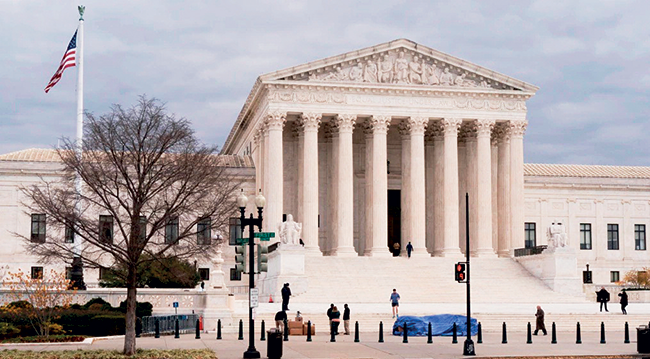
by Vijaya Chandrasoma
The Supreme Court of the United States of America is the highest court in the land, entrusted with ensuring that legislation is faithfully interpreted and enacted according to the Constitution, in word and in spirit.
The Court is presently comprised of nine Justices, nominated by presidents of the United States. As presidents are assumed to be elected by a majority of the nation, it is assumed that the Court also represents the will of that majority.
Unfortunately, that is not the case with the current Supreme Court. Five of its Justices were appointed by two presidents who won the presidency with a minority of the electorate.
George W. Bush won the presidency in 2000 with a majority in the antiquated Electoral College but a minority popular vote of over 500,000. Trump also won the presidency in 2016 with a majority in the Electoral College, but a minority popular vote of over three million. In any other election in the world, and in any other election in the USA, from dog-catcher upwards, Al Gore and Hillary Clinton would have been declared the winners of the presidency in 2000 and 2016, respectively.
Bush appointed two Justices to the present Court. Justice John Roberts in July, 2005 on the retirement of Sandra Day O’Connor. Roberts was subsequently appointed Chief Justice on the death Chief Justice William Rehnquist, who was replaced in January, 2006 by Justice Samuel Alito. Predictably, these new Justices were members of the Republican Party, with opinions tempered with traditional conservative values.
Trump appointed Neil Gorsuch to replace Antonin Scalia in 2017, Brett Kavanaugh on the retirement of Justice Kennedy in 2018 and Amy Coney Barrett on the death of Justice Ruth Bader Ginsburg in September 2020. All these Justices are light on judiciary qualifications and experience, but espouse the new, hardly traditional, radical right, Evangelical opinions of Trump’s Republican Party.
The sixth Republican Justice of the Court, African American Clarence Thomas, was appointed by the older Bush in 1991.
The Supreme Court has made several rulings in its history, based on politics, against the Constitution and the will of the people. The most egregious of these rulings are:
The Dred Scott ruling of 1857
The Dred Scott decision in 1857 was the Supreme Court ruling that “African Americans could not be citizens of the United States, and therefore, had no standing in the US legal system, and the federal government had no authority to regulate slavery”. Chief Justice Roger Brooke Taney’s ruling “ignored precedent, distorted history, imposed a rigid rather than a flexible construction of the Constitution, ignored specific grants of power in the Constitution, and tortured meanings out of other, more obscure clauses”.A description which perfectly defines the recent decision of today’s radical right, Evangelical Supreme Court, overturning the rights of reproductive freedom granted to all women.
President Abraham Lincoln issued the Emancipation Proclamation on January 1, 1863, as the nation approached its third year of bloody civil war. The Proclamation essentially declared that “all persons held as slaves” within the rebellious states “are, and henceforward shall be free”.
The civil war ended in 1865 with the victory of the Union forces, at an estimated cost of 620,000 lives. Although four million Black slaves were granted their freedom, the Proclamation did not end slavery, but it “captured the hearts and imagination of millions of Americans and fundamentally transformed the character of the civil war”.
The hard-fought freedom achieved by the Union victory was freedom in name only, devoid of any vestige of equality. From 1865, “freedom” was subject to the racial ravages of Reconstruction, with restrictive laws designed to limit the freedom of the slaves. Reconstruction was followed by nearly a century of Jim Crow laws, which mandated legal segregation of the races.
Martin Luther King’s 1963 dream that the “momentous decree” of the Emancipation Proclamation “came as a great light of hope to millions of Negro slaves who had been seared under the flames of withering injustice. It came as a joyous daybreak to end the long night of their captivity”. However, that “joyous daybreak” took over 100 years to see the light of day, in the form of the Civil Rights Act of 1964.
His dream of “the day my four little children will one day live in a nation where they will not be judged by the colour of their skin but by the content of their character”, has only dawned in the legal sense. The “flames of withering injustice” of racism remain unfettered in the hearts and minds of a significant section of white America.
The Anti New Deal Laws (specifically the Social Security Act) of 1937
Franklin Delano Roosevelt won his second term in 1936 with, according to the New York Times “the most overwhelming testimonial of approval ever received by a national candidate in the history of the nation”. However, the election victory was tempered with a great fear that a hostile Supreme Court would vote to invalidate Roosevelt’s New Deal – a set of progressive programs designed to provide a safety net to those adversely affected by the Great Depression, and to initiate progressive legislation to improve the national economy. Specifically, the Supreme Court declared that the Social Security Act was “unconstitutional”.
Roosevelt decided not to undertake the arduous task of a constitutional amendment to pass his programs, which would have been possible given his vast popularity in Congress and the nation. In his opinion, it was not the Constitution that needed change; it was the Composition of the Supreme Court which would best allow him to continue the programs of the New Deal.
In February, 1937, Roosevelt asked Congress to empower him to appoint up to six more Supreme Court Justices, ostensibly to strengthen an aging Supreme Court. “Life tenure” argued Roosevelt, “was not intended to create a static judiciary. A constant and systematic addition of younger blood will vitalize the courts”.
Roosevelt’s plan touched off a grim struggle among the three branches of government. “If Roosevelt won”, opponents warned, “he would destroy the independence of the judiciary and create an evil precedent for successors who wished to ‘pack’ the Court”. If Roosevelt lost, his supporters countered, “a few judges appointed for life would be able to ignore the popular will, destroy programs vital to the welfare of the people, and deny the president and Congress the powers exercised by every other government in the world”. Both opinions have been proved to be valid, even complementary.
However, the latter opinion is particularly relevant to the current Supreme Court, which aims to “destroy programs vital to the welfare of the people” and so deny President Biden his powers to carry out his programs of progressive legislation. These include repairing of crumbling physical infrastructure of the nation, taking necessary steps to combat climate change, and enhancing the social safety net of those Americans who are most vulnerable.
Although the composition of the Supreme Court has been preserved, Roosevelt’s veiled threats to pack the Court staved off the invalidation of the Social Services Act and other progressive reforms. Roosevelt claimed that he “may have lost the battle, but he had won the war”.
That he did. His “socialist” programs continue to provide a limited social safety net to all Americans today.
The Overturning of Roe v. Wade in 2022
The current Supreme Court, with its 6/3 radical right majority, overturned Roe v. Wade, the 1973 ruling granting reproductive freedom without government restrictions to all women. Roe v. Wade has been reconfirmed in the last 50 years by numerous subsequent Supreme Court rulings, and was considered to be the law of the land, popular with over 80% of all Americans.
The present Court threatens to make even more inroads to recently passed progressive legislation. Justice Clarence Thomas recently stated that the Court is taking a second look aimed at scrapping rulings that protect contraception, same-sex marriage and same-sex sexual activity. Even the Voting Rights Act of 1965 and the Civil Rights Act of 1964 are on the list of endangered legislation.
President Biden does not enjoy the popularity FDR enjoyed in the 1930s, although he did inherit an economy approaching recession caused by the Covid epidemic, which had been criminally mismanaged by the Trump administration. The economy has also been hit by the military assistance given to Ukraine to help a sovereign nation combat illegal invasion by Putin’s Russia, now globally described as a “terrorist government”.
The economy of United States is going through a period of near recession and unprecedented inflation, global problems which will be solved in the fullness of time. Biden’s presidency has brought fresh air of decency and integrity to the White House, compared to the stench of vulgarity, corruption and treason of the previous administration. Biden’s previously low popularity ratings have shown significant increases in the past few weeks. If the midterms were held today, most polls indicate that the Democrats lead the Republicans by seven to ten percentage points.
There are a couple of silver linings in these very dark clouds. Recent events indicate that Trump may be losing his stranglehold on the Republican party. His erratic, often maniacal behaviour and the irrefutable evidence emerging of his complicity in the January 6 coup, have the majority of the party questioning if his involvement in the November midterms would not be a liability. As Deputy Chairperson of the January 6 Committee, Liz Cheney said, “it is impossible to support both Donald Trump and the Constitution”.
A viable alternative for Republican leadership, of similar radical right persuasion but more educated and presentable, also seems to be emerging in the persona of Florida Governor, Ron de Santis.
The unpopular reversal of Roe v. Wade, which guaranteed reproductive freedom to all women in America, will take millions of votes away from the Republican Party in the midterm elections in November.As will the Independence Day mass shooting in Highland Park, Illinois, where seven people were killed and over 30 wounded by a 22-year-old white shooter armed with an AR 15 automatic rifle. The killer is in custody and faces seven murder and numerous other charges which will keep him prison for life. This tragedy marks the 314th mass shooting in the USA for this year alone.
Republicans keep blocking meaningful gun control regulations, including a total ban on military style assault rifles. Controls favoured by over 80% of the American people.These two factors – anti-abortion laws and the refusal to enact stringent gun control laws – may help Democrats get the majority they need in Congress in the midterms to address the real problems facing the nation. If the Republicans gain control of Congress, they will surely resume their down-slide on the slippery slope to a Theocratic Autocracy.
Proving the age-old platitude: Nations get the leaders they deserve.Of course, before, during and after the midterms, Trump and his hard-core cult will never give up on their aspirations for the perpetuation of white privilege. Nor will they tolerate the imminent arrest of Trump and/or his enablers, even in the face of undeniable evidence of their complicity in the January 6 coup. These thugs will “not go gentle into that good night”.
The USA may see violence surpassing that suffered during the civil war, in the next few months, until and unless the epidemic of Trumpism is finally stamped out. And this time, these home-made, white supremacist terrorists will be armed not with muskets and bayonets, but with military style killing machines.
Features
Defining Oxygen Economy for sustaining life on Earth and growing intergenerational wealth
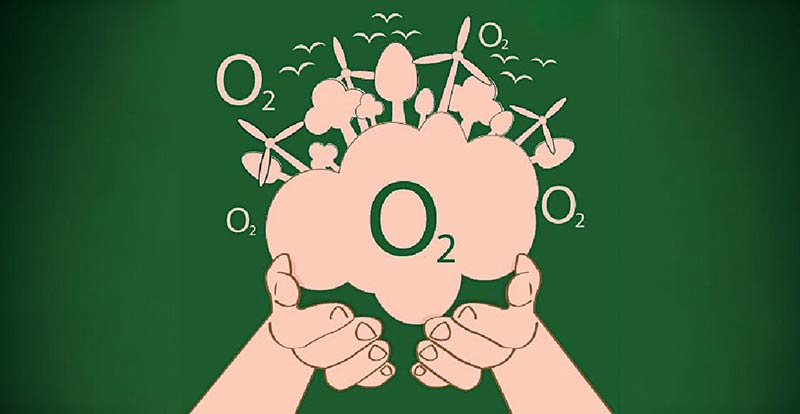
by Dr. Ranil Senanayake
The Oxygen that is present in the air that we breathe is the birth right of every organism that lives on this planet. It is free for everyone. However, the action of some to take out more than their share, without replacement, has created a condition, where the Global Commons of air is being rapidly degraded,
The most critical component of air is Oxygen. It surrounds us, filling our lungs with every breath we take. It is the invisible gift of nature that we take for granted. But this essential resource—the very foundation of life— is being constricted, because the volume of trees, plants, and photosynthetic organisms that produce oxygen is being lost across the planet. Further, there is no initiative for this generation capacity to be increased as a matter of urgency. exploited at present? Why couldn’t increasing the generation capacity of Oxygen have economic value? Could those who benefit most from using the resources of the Global Commons be required to contribute to its maintenance? This is the idea behind the Oxygen Economy, a bold and transformative concept that seeks to address environmental and social challenges in a way that is fair, sustainable, and forward-thinking beyond GDP value which measures the success of our societies today.
What Is the Oxygen Economy?
The Oxygen Economy is a financial framework, that recognises the value of the global stocks of Oxygen within the commons and records the deposition and consumption through economic activity.
The Oxygen Economy is a principled framework that recognises the stocks, transactions and deposits of Oxygen into the Global commons and assigns value to stocks from privately contracted production units, it stems from a growing recognition that Oxygen is a declining resource with an easy replenishment response.
Oxygen, considered a “free” resource. It is not. Much like oil and coal it is a ‘fossil’ resource that has been a part of the atmosphere for millions of years. It has been slowly declining, but is ‘topped up’ by a service provided by the earth’s ecosystems —particularly trees, plants, and other photosynthetic organisms. These organisms create molecular Oxygen through the process of photosynthesis, supporting life on earth and maintaining the balance of our atmosphere.
At its core, the Oxygen Economy aims to ensure that those who produce contracted and monitored oxygen, be it towns, farmlands, rural or forested lands, are fairly compensated for their efforts. It also holds industries and private-sector entities that benefit from oxygen consumption accountable in maintaining the sustainability of this resource.
What is the urgency to address oxygen as a depleting resource?
Other than the obvious fact of falling global stocks, the need of an Oxygen Economy arises from the urgency of addressing two critical challenges facing humanity: environmental degradation and economic inequality. Placing value on Oxygen production could effectively provide an effective response to both. For decades, efforts to combat climate change have focused primarily on carbon
sequestration. While important, the focus on Carbon sequestration often overlooks other vital ecosystem services, including oxygen production that can contribute towards a growing wealth paradigm. Oxygen, like water and food, is essential for life. However, unlike other resources, it has largely been treated as infinite and freely available, which it is not. In reality, the supply of Oxygen to the atmosphere is decreasing due to deforestation, while the consumption of Oxygen by space exploration, industrial production, war and transport are increasing. Today Oxygen levels have dropped by approximately 2%, raising concerns about the long- term sustainability of this critical resource.
How the Oxygen Economy works
The Oxygen Economy operates on the principles of private property being valued using financial tools such as valuation guarantees, stakeholder contracts and Insurances to monetise contractually produced oxygen as a financial product. This involves three key components:
1. Valuation guarantee:
Assigning an economic value to the oxygen produced by contracted and registered units in identified geographical areas of production is based on the researched, monitored and validated measurements of oxygen generation by trees / plants or photosynthetic organisms such as Cyanobacteria.
2. Deposition guarantee:
Issuance of certificates of completion and deposit of Oxygen into the global Commons Stakeholder Contracts and Compensation: Establishing formal agreements between oxygen consumers (e. g., corporations / Space exploration companies) and contracted oxygen producers (e.g., farmers, Local communities)
3. Policy and regulation: Introducing replicable legal frameworks at a regional scale to enforce accountability and prevent the uncontrolled exploitation of global oxygen resources.
Lessons from Sri Lanka
One country that is already exploring the potential of the Oxygen Economy is in the bioregional area of Sri Lanka. Known for its rich biodiversity and commitment to environmental stewardship, Sri Lanka has implemented initiatives that align with the principles of the Oxygen Economy. In one notable project, women from farming communities established and nurtured trees using contracts that measured and validated payments for photosynthetic biomass on an annually recurring basis for a period of four years. The stakeholders earning substantive income from this project were sensitised to the emerging Oxygen Economy while contributing their obligations to global environmental resilience. Over three years, these participants generated thousands of litres of oxygen, demonstrating that the concept is not only viable but also impactful.
Scaling the Oxygen Economy globally:
While Sri Lanka’s efforts are a promising start, the true potential of the Oxygen Economy
lies in its ability to scale globally. Imagine a world where farmers are compensated for the establishment of trees, where rural and even urban greenery projects could receive funding to expand their impact for this paradigm of business. Such a system would not only help combat climate change but also address economic inequalities of the current GDP paradigm, by together contracting the Oxygen economic asset tool to those who sustain the planet’s life-support systems.
Addressing potential challenges
Like any transformative idea, the Oxygen Economy faces potential challenges. Critics may argue that assigning a monetary value to Oxygen risks commodifying a natural resource that should remain freely accessible. Others may question the feasibility of measuring, validating and regulating oxygen production on a global scale. These concerns can be addressed by emphasising the ethical principles behind the Oxygen Economy. The goal is not to charge people for breathing but to ensure that those who contribute to its sustainability profit from financial contracts for Oxygen production. Additionally, such transparent systems for measuring and validating oxygen production will be crucial for building trust and ensuring fairness towards the vision of accounting for intergenerational wealth beyond the GDP framework that exists.
A vision for the future
The Oxygen Economy represents a paradigm shift in how we think about our relationship with the planet. It challenges us to move beyond the notion of nature as an infinite resource and to recognise the boundaries of our Global Commons. The true value of planet Earth is as an ecosystem that sustains life for all biota. By aligning economic practices with environmental stewardship, the Oxygen Economy offers a path towards a more equitable and sustainable future. It supports the foundations of intergenerational wealth that will be reflected in our contributions to the cycling atmospheric gasses of our Global Commons.
Imagine a world where the air we breathe is not taken for granted but is cherished and protected. Where farmers, communities, and ecosystems are rewarded for their contributions to the planet’s well-being. Where industries operate with a framework of accountability to prioritise the health of our shared environment. This is the vision of the Oxygen Economy—a vision that is within our reach if we act together, with urgency and determination, to lay well informed, solid foundations.
Features
Two sides to a coin; each mourn threat; no threat, no budget blues

 The coin Cassandra starts her Friday Cry with the recent film Rani. Parroting what her friends said on seeing the film, Cass in her Cry just prior to this wrote: “It has been reviewed as outstanding; raved over by many; and already grossed the highest amount in SL cinema history – Rs 100 million from date of release January 30 to February 14. This last: testimony to its popular appeal and acceptance as an outstanding cinema achievement.
The coin Cassandra starts her Friday Cry with the recent film Rani. Parroting what her friends said on seeing the film, Cass in her Cry just prior to this wrote: “It has been reviewed as outstanding; raved over by many; and already grossed the highest amount in SL cinema history – Rs 100 million from date of release January 30 to February 14. This last: testimony to its popular appeal and acceptance as an outstanding cinema achievement.
” Cass admitted she had not seen the film. She now realises her reluctance to jostle in the crowd in one of many cinemas retelling the murder of Richard de Zoysa and traumatic mourning of his mother, Manorani, was because there grew in her a distaste after watching short previews on YouTube of parts of the film. Most centered on is Swarna Mallawarachchi, starring as Manorani, downing alcohol and smoking cigarette after cigarette. Director Asoka Handagama was sensationlising the more dramatic incidents of the tragedy. That was to please the crowd.
We Sri Lankans, or many, have absolutely no tight upper lip. Most funerals of yesteryear and many rural ones still have writhing moaning and groaning and appeals to the dead to smile one more time, say a word, rise up. These loud gasped cries in between sobbing sent Cass wickedly into silent giggles. She thought: what if the dead obliged with even one request. Worst, if he rose up and sat in his coffin. The first to run away would be the callers! People love wallowing in sniffles of sorrow. Audiences much prefer fictionalised retelling of events to documentaries about them. Handagama does style his film as fictionalised history but he definitely is guilty of sensationalism. Cass’ gut feelings have been given words in a criticism on Face Book which was shared with Cass by a nephew.
The sent around message is titled: Misconceived, Misinterpreted, Miscast and a Big Mistake. That tells it all. However there follows an incisive critique of the film Rani by one of Richard’s friends who knew Manorani well and how she was after her son’s death. He signs himself, but Cass will not quote the name here since there is much truth, lies and even hidden agendas in what is posted on social media.
He writes: “Badly acted, badly directed and badly researched … A clear example of character assassination via a deliberate misuse of artistic license! … I want to state my opinion about two people that many of us loved, respected and knew intimately.” He then goes on to point out mistakes and exaggerations: Manorani was never even bordering on alcoholism and hardly ever smoked. And when she did, socially or to dim her sorrow, she did it elegantly. A Man Friday commented: they should have taught Swarna how to hold a cigarette and smoke it as it should be smoked. Hence my contention, every coin, even a box office success, has two sides to it, two diverse criticisms and in-betweens. Decision: Cass will not queue for a cinema ticket.
Each morn
Phoned a US living friend who was recovering from a harsh winter’s gift to her – severe flu. She said the flu was leaving her but depression and distraught-ness about hers and the US’s future were threatening to drown her in emotional turmoil much worse than the worst cough ‘n cold.
I knew the reason – Trump’s trumpets of new opinions, threats, enactments et al. She dreaded getting up each morning wondering what new calamity was to descend on the American people and by influence, spreading to the world. Her son has forbidden TV news watching and reading the newspapers which she says are so opposed to media treatment of the Prez.
I could very well sympathise with her. We in Sri Lanka suffered bouts of such threatened discomfort, nay calamitous warnings and sheer dread. My remembering mind went to Shakespeare in his tragic play Macbeth. Macduff’s description of Scotland under the reign of Macbeth to Malcolm, son and heir of murdered Duncan now sheltered in England, goes thus: “Each new morn/ New widows howl, new orphans cry/ new sorrows strike heaven on the face that it resounds.”
Cass does not know about you but dread lurked in her heart and mind when the JVP 1989 insurrection took place – for her teenage son. The LTTE and suicide bombs caused utter destruction of life, limb and infrastructure. Families who had travelled together now travelled to schools and workplaces separately since no bus or train was safe. Nor were the privately owned cars. Then came two tyrant Presidents with sudden deaths of prominent persons and media personnel like Richard and Lasantha and many others.
Blatant robbing of our money had us gasping helplessly. Riff raff rose in power and lorded, one such tying a man to a stake for not attending a meeting. Then rode to power on popular vote another brother in the newly created powerful dynasty. Word of mouth minus stroke of pen had orders given out to be promptly executed. White vans which plied the streets were reduced but worse happened.
One order and the rice fields had no grain, fruits dried on trees, forex earning luscious two leaves and a bud withered and could not be plucked. Bankruptcy resulted. But we had a ‘shipless’ harbour which had to be mortgaged for a song to the Chinese; a plane-less airport sounding death to elephants and peafowl; and a gaudy tower to gaze on or commit suicide from. A gathering of people on Galle Face Green righted things.
Then came into power a party that had two men and a woman in Parliament which yielded a true Sri Lankan with country first and last in mind, as President. Followed a sharp victory for the coalition of parties led by the hopefully reformed JVP so that three seats became almost two thirds of all seats in Parliament and a woman as Prime Minister. She had no connection to previous Heads unlike a former woman PM and Prez. The first woman PM rode to power weeping for her murdered husband; the younger very promising Prez because she was daughter of two Heads of Sri Lanka. But there was, even under their reign, mutterings and difficulties.
Truth be told, we sleep better at night and wake up with no dread in our innards. We rise to shine (if possible, in the heat of Feb) knowing people are working and corruption is not wrought by those in power. Thank goodness and our sensible voters for this peace we savour.
2025 Budget
Cass’ title has the phrase ‘no budget blues’. Looks like it is generally correct. Of course, the Opposition is criticising Finance Minister AKD’s presented budget. Cass is no economist, not by a long chalk, but she was glad to see that expenditure on health and education were substantial. We had a time when the armed forces were allocated more than education and health combined. Much has been looked into: including pregnant women and the Jaffna library among a host of mentioned amenities. We have no need to pessimistically await a Gazette Extraordinary stating negative segments of the future year’s financial plan. Thanks be!
Gaza and Ukraine are worse in position and the world is awry. But Sri Lanka is in a phase where Kuveni’s curse is stilled and people are considering themselves Sri Lankans, uniting to re-make Sri Lanka Clean as it was before selfish corrupt politicians took over.
Features
As Africa toes Chinese line …
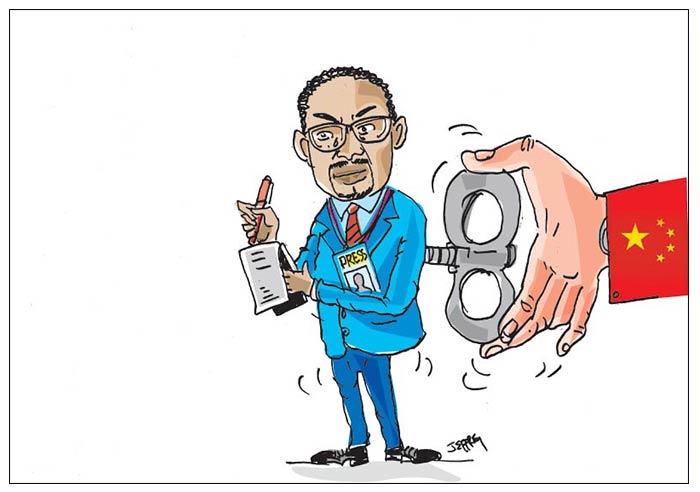
Mitchell Gallagher
Every year, China’s minister of foreign affairs embarks on what has now become a customary odyssey across Africa. The tradition began in the late 1980s and sees Beijing’s top diplomat visit several African nations to reaffirm ties. The most recent visit, by Foreign Minister Wang Yi, took place in mid-January 2025 and included stops in Namibia, the Republic of the Congo, Chad and Nigeria.
For over two decades, China’s burgeoning influence in Africa was symbolised by grand displays of infrastructural might. From Nairobi’s gleaming towers to expansive ports dotting the continent’s shorelines, China’s investments on the continent have surged, reaching over $700 billion by 2023 under the Belt and Road Initiative, China’s massive global infrastructure development strategy.
But in recent years, Beijing has sought to expand beyond roads and skyscrapers and has made a play for the hearts and minds of African people. With a deft mix of persuasion, power and money, Beijing has turned to African media as a potential conduit for its geopolitical ambitions. Partnering with local outlets and journalist-training initiatives, China has expanded China’s media footprint in Africa. Its purpose? To change perceptions and anchor the idea of Beijing as a provider of resources and assistance and a model for development and governance. The ploy appears to be paying dividends, with evidence of sections of the media giving favourable coverage to China.
But as someone researching the reach of China’s influence overseas, I am beginning to see a nascent backlash against pro-Beijing reporting in countries across the continent. China’s approach to Africa rests mainly on its use of “soft power,” manifested through things like the media and cultural programmes. Beijing presents this as “win-win cooperation”—a quintessential Chinese diplomatic phrase mixing collaboration with cultural diplomacy. Key to China’s media approach in Africa are two institutions: The China Global Television Network (CGTN) Africa and Xinhua News Agency.
CGTN Africa, which was set up in 2012, offers a Chinese perspective on African news. The network produces content in multiple languages, including English, French and Swahili, and its coverage routinely portrays Beijing as a constructive partner, reporting on infrastructure projects, trade agreements and cultural initiatives. Moreover, Xinhua News Agency, China’s state news agency, now boasts 37 bureaus on the continent. By contrast, Western media presence in Africa remains comparatively limited.
The BBC, long embedded due to the United Kingdom’s colonial legacy, still maintains a large footprint among foreign outlets, but its influence is largely historical rather than expanding. And as Western media influence in Africa has plateaued, China’s state-backed media has grown exponentially. This expansion is especially evident in the digital domain. On Facebook, for example, CGTN Africa commands a staggering 4.5 million followers, vastly outpacing CNN Africa, which has 1.2 million—a stark indicator of China’s growing soft power reach. China’s zero-tariff trade policy with 33 African countries showcases how it uses economic policies to mould perceptions.
And state-backed media outlets like CGTN Africa and Xinhua are central to highlighting such projects and pushing an image of China as a benevolent partner. Stories of an “all-weather” or steadfast China-Africa partnership are broadcast widely and the coverage frequently depicts the grand nature of Chinese infrastructure projects. Amid this glowing coverage, the labour disputes, environmental devastation or debt traps associated with some Chinese-built infrastructure are less likely to make headlines. Questions of media veracity notwithstanding, China’s strategy is bearing fruit.
A Gallup poll from April 2024 showed China’s approval ratings climbing in Africa as US ratings dipped. Afrobarometer, a pan-African research organisation, further reports that public opinion of China in many African countries is positively glowing, an apparent validation of China’s discourse engineering. Further, studies have shown that pro-Beijing media influences perceptions. A 2023 survey of Zimbabweans found that those who were exposed to Chinese media were more likely to have a positive view of Beijing’s economic activities in the country. The effectiveness of China’s media strategy becomes especially apparent in the integration of local media.
Through content-sharing agreements, African outlets have disseminated Beijing’s editorial line and stories from Chinese state media, often without the due diligence of journalistic scepticism. Meanwhile, StarTimes, a Chinese media company, delivers a steady stream of curated depictions of translated Chinese movies, TV shows and documentaries across 30 countries in Africa. But China is not merely pushing its viewpoint through African channels. It’s also taking a lead role in training African journalists, thousands of whom have been lured by all-expenses-paid trips to China under the guise of “professional development.” On such junkets, they receive training that critics say obscures the distinction between skill-building and propaganda, presenting them with perspectives conforming to Beijing’s line.
Ethiopia exemplifies how China’s infrastructure investments and media influence have fostered a largely favourable perception of Beijing. State media outlets, often staffed by journalists trained in Chinese-run programmes, consistently frame China’s role as one of selfless partnership. Coverage of projects like the Addis AbabaDjibouti railway line highlights the benefits, while omitting reports on the substandard labour conditions tied to such projects—an approach reflective of Ethiopia’s media landscape, where state-run outlets prioritise economic development narratives and rely heavily on Xinhua as a primary news source. In Angola, Chinese oil companies extract considerable resources and channel billions into infrastructure projects.
The local media, again regularly staffed by journalists who have accepted invitations to visit China, often portray Sino-Angolan relations in glowing terms. Allegations of corruption, the displacement of local communities and environmental degradation are relegated to side notes in the name of common development. Despite all of the Chinese influence, media perspectives in Africa are far from uniformly pro-Beijing. In Kenya, voices of dissent are beginning to rise and media professionals immune to Beijing’s allure are probing the true costs of Chinese financial undertakings. In South Africa, media watchdogs are sounding alarms, pointing to a gradual attrition of press freedoms that come packaged with promises of growth and prosperity.
In Ghana, anxiety about Chinese media influence permeates more than the journalism sector, as officials have raised concerns about the implications of Chinese media cooperation agreements. Wariness in Ghana became especially apparent when local journalists started reporting that Chinese-produced content was being prioritised over domestic stories in state media.
Beneath the surface of China’s well publicised projects and media offerings, and the African countries or organisations that embrace Beijing’s line, a significant countervailing force exists that challenges uncritical representations and pursues rigorous journalism. Yet as CGTN Africa and Xinhua become entrenched in African media ecosystems, a pertinent question comes to the forefront: Will Africa’s journalists and press be able to uphold their impartiality and retain intellectual independence? As China continues to make strategic inroads in Africa, it’s a fair question.
(The writer is a PhD candidate of political science at Wayne State University, US. This article was published on www.theconversation.com)
-

 Sports7 days ago
Sports7 days agoRemarkable turnaround for Sri Lanka’s ODI team
-

 Features7 days ago
Features7 days agoScammed and Stranded: The Dark Side of Sri Lanka’s Migration Industry
-

 Business7 days ago
Business7 days agoUN Global Compact Network Sri Lanka: Empowering Businesses to Lead Sustainability in 2025 & Beyond
-
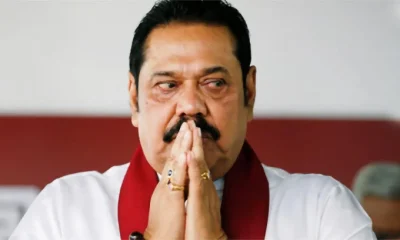
 Features6 days ago
Features6 days agoDon’t betray baiyas who voted you into power for lack of better alternative: a helpful warning to NPP – II
-

 News4 days ago
News4 days agoCommercial High Court orders AASSL to pay Rs 176 mn for unilateral termination of contract
-

 Sports3 days ago
Sports3 days agoSri Lanka face Australia in Masters World Cup semi-final today
-
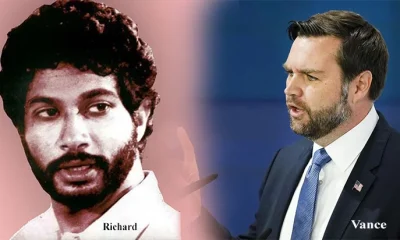
 Features6 days ago
Features6 days agoTwo films and comments
-
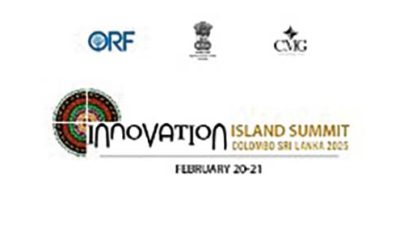
 News7 days ago
News7 days agoInnovation Island Summit 2025, Colombo, Sri Lanka











